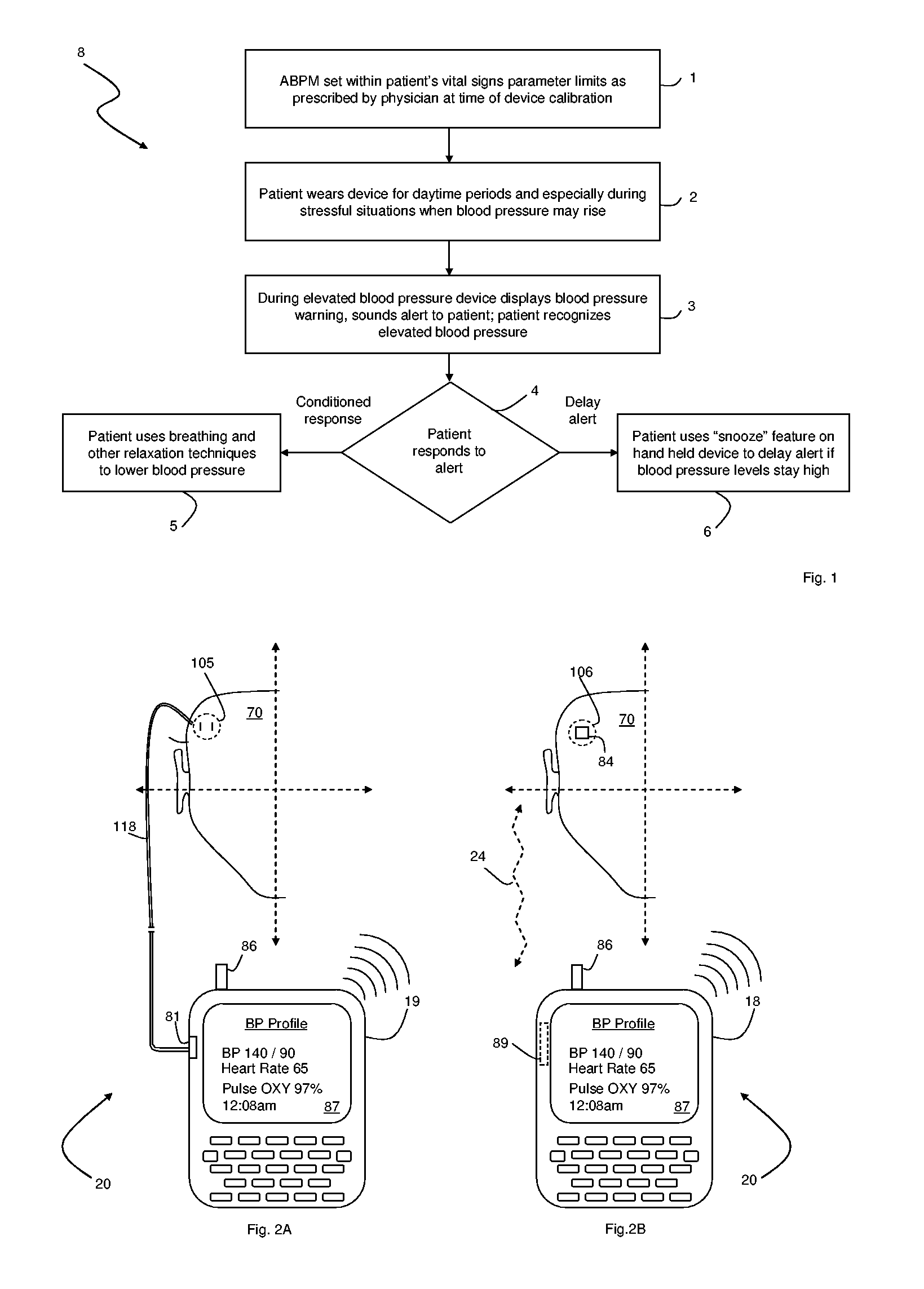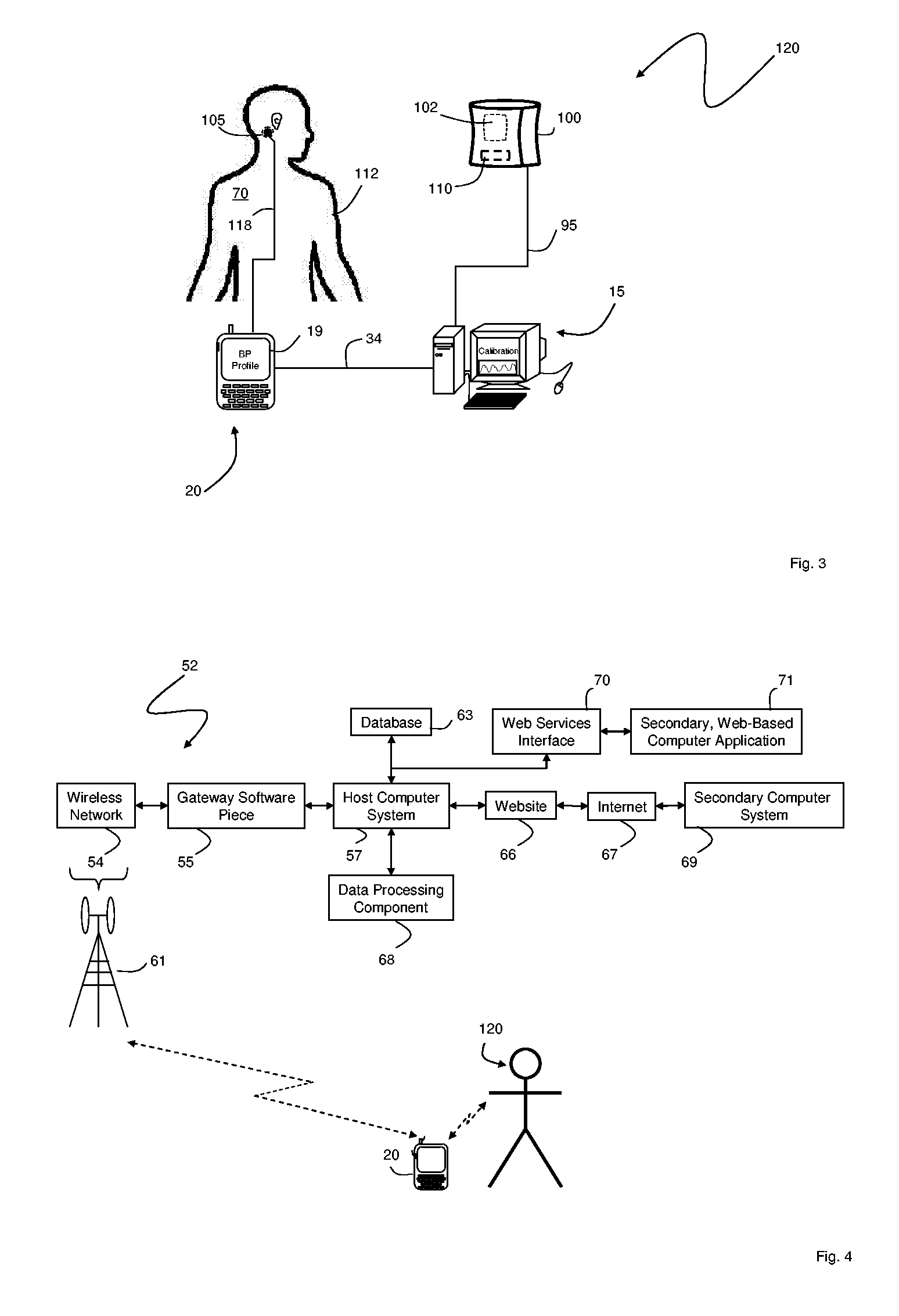Vital signs monitor used for conditioning a patient's response
a vital signs monitor and patient technology, applied in the field of medical devices, can solve the problems motion-related artifacts, etc., and achieve the effects of reducing the accuracy of the measurement, reducing the error of the measurement, and increasing the accuracy of the blood-pressure measuremen
- Summary
- Abstract
- Description
- Claims
- Application Information
AI Technical Summary
Benefits of technology
Problems solved by technology
Method used
Image
Examples
Embodiment Construction
[0020]FIG. 1 shows a semi-schematic diagram illustrating a conditioned response alert system 8 that features an ambulatory blood pressure monitor (ABPM) according to the invention. In preferred embodiments, a physician prescribes to a patient an ABPM that identifies harmfully high blood pressure levels using the conditioned response alert system 8. While outfitting the patient, the physician sets vital signs parameter limits, e.g. blood pressure limits, into the ABPM that indicate when an audio alarm will sound (step 1). Patients typically wear the ABPM for an extended period of time, during which they are typically exposed to stressful situations that may cause their blood pressure to rise (step 2). As blood pressure levels elevate into dangerously high levels, the ABPM emits an audio response and / or a visual alert that indicates high blood pressure levels (step 3). The patient responds to the alert (step 4) by, e.g., using breathing and other relaxation techniques to lower their b...
PUM
 Login to View More
Login to View More Abstract
Description
Claims
Application Information
 Login to View More
Login to View More - R&D
- Intellectual Property
- Life Sciences
- Materials
- Tech Scout
- Unparalleled Data Quality
- Higher Quality Content
- 60% Fewer Hallucinations
Browse by: Latest US Patents, China's latest patents, Technical Efficacy Thesaurus, Application Domain, Technology Topic, Popular Technical Reports.
© 2025 PatSnap. All rights reserved.Legal|Privacy policy|Modern Slavery Act Transparency Statement|Sitemap|About US| Contact US: help@patsnap.com



